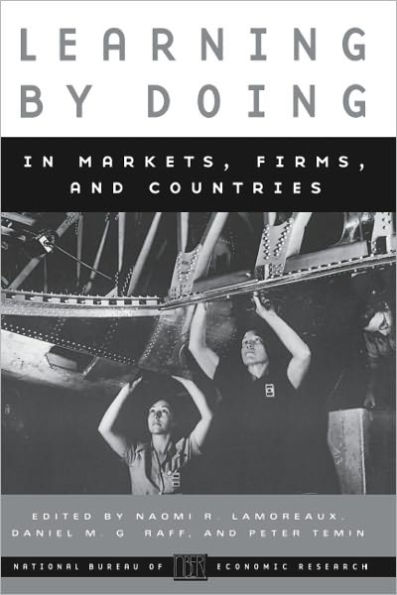Learning by Doing in Markets, Firms, and Countries draws out the underlying economics in business history by focusing on learning processes and the development of competitively valuable asymmetries. The essays show that organizations, like people, learn that this process can be organized more or less effectively, which can have major implications for how competition works.
The first three essays in this volume explore techniques firms have used to both manage information to create valuable asymmetries and to otherwise suppress unwelcome competition. The next three focus on the ways in which firms have built special capabilities over time, capabilities that have been both sources of competitive advantage and resistance to new opportunities. The last two extend the notion of learning from the level of firms to that of nations. The collection as a whole builds on the previous two volumes to make the connection between information structure and product market outcomes in business history.
1100923728
The first three essays in this volume explore techniques firms have used to both manage information to create valuable asymmetries and to otherwise suppress unwelcome competition. The next three focus on the ways in which firms have built special capabilities over time, capabilities that have been both sources of competitive advantage and resistance to new opportunities. The last two extend the notion of learning from the level of firms to that of nations. The collection as a whole builds on the previous two volumes to make the connection between information structure and product market outcomes in business history.
Learning by Doing in Markets, Firms, and Countries
Learning by Doing in Markets, Firms, and Countries draws out the underlying economics in business history by focusing on learning processes and the development of competitively valuable asymmetries. The essays show that organizations, like people, learn that this process can be organized more or less effectively, which can have major implications for how competition works.
The first three essays in this volume explore techniques firms have used to both manage information to create valuable asymmetries and to otherwise suppress unwelcome competition. The next three focus on the ways in which firms have built special capabilities over time, capabilities that have been both sources of competitive advantage and resistance to new opportunities. The last two extend the notion of learning from the level of firms to that of nations. The collection as a whole builds on the previous two volumes to make the connection between information structure and product market outcomes in business history.
The first three essays in this volume explore techniques firms have used to both manage information to create valuable asymmetries and to otherwise suppress unwelcome competition. The next three focus on the ways in which firms have built special capabilities over time, capabilities that have been both sources of competitive advantage and resistance to new opportunities. The last two extend the notion of learning from the level of firms to that of nations. The collection as a whole builds on the previous two volumes to make the connection between information structure and product market outcomes in business history.
39.99
In Stock
5
1

Learning by Doing in Markets, Firms, and Countries
356
Learning by Doing in Markets, Firms, and Countries
356Related collections and offers
39.99
In Stock

Product Details
| ISBN-13: | 9780226468433 |
|---|---|
| Publisher: | University of Chicago Press |
| Publication date: | 11/01/2007 |
| Series: | National Bureau of Economic Research Conference Report |
| Sold by: | Barnes & Noble |
| Format: | eBook |
| Pages: | 356 |
| File size: | 3 MB |
About the Author
From the B&N Reads Blog
